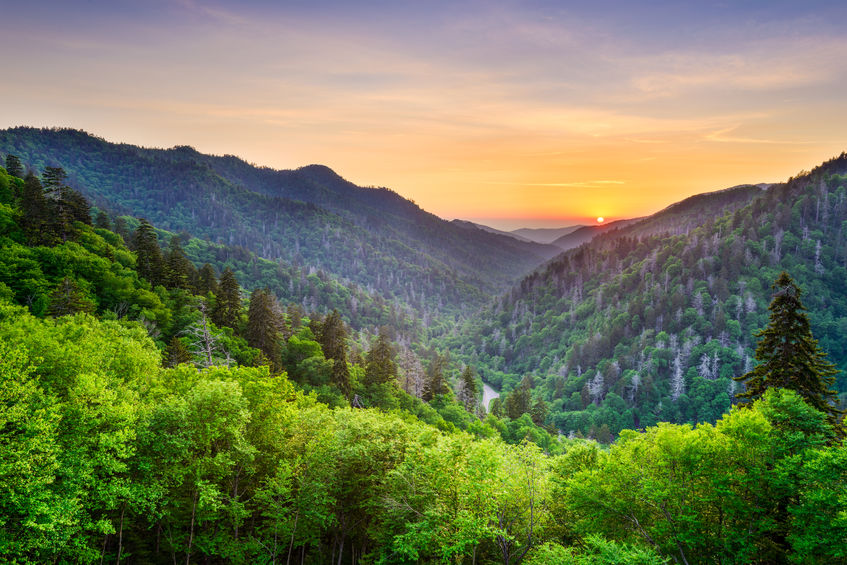Many today are taught that development is bad for the well being of natural ecosystem. A few decades ago, environmentalists blamed over-population for the environmental degradation. Today, they blame climate change.
But their assessment of the supposed impact of human development on nature is inaccurate. Most of the developed countries like the U.S. and the UK have improved their pollution levels after the industrial era, with economic development playing a key role in helping achieve this feat.
The developing parts of the world are still in their industrialization phase. It will take a considerable amount of time before their economies will be able to tackle pollution to the standards that can be observed in the developed parts of the world.
Nevertheless, developing countries are showing incredible progress in reclaiming the lost natural environment, thanks to advanced technology and fast-growing GDP that allows them to allocate enough funds for conservation strategies.
Here are some examples of conservation success stories from India that offers hope for the future of wildlife and ecosystems in some of the world’s most populated regions.
The Scenic Mangrove Ecosystem of Tropical Waters
Mangroves are shrubs or small trees that grow in coastal saline or brackish water. They act as a natural buffer against storm surges. The U.S. has three types of mangroves: red, black, and white mangroves, with most of it in Florida.
Over in India, these ecosystems began shrinking and was a cause of worry for local authorities. Mangroves “offer critical nursing environments for juveniles of thousands of fish species, from 1-inch gobies to 10-foot sharks.”
In India’s Maharashtra, the Mangroves are making a comeback. A substantial increase in mangrove cover from 186 sq.km. in 2013 to 304 sq.km. in 2017 has been achieved through conservation efforts.
Maharashtra is one of the top states in India with the highest GDP and it is no surprise that they were able to fund this recovery. This is another testament to the fact that economic growth can positively contribute towards the stewardship of nature.
From Poachers to Protectors: Slender Loris Population Increases by 5 times
Slender Loris is a small primate that is found in the forests of India and Sri Lanka. They are closely related to Bush Babies and forage on nectar, tiny fruits, insects and agriculture produce.
In the Ayyalur forests of India’s lush Eastern Ghat mountain forests, a movement to revive the population of the Grey Slender Loris in 40 villages has yielded great returns.
The villagers in this region over hunted the small primate. But now, with awareness campaigns to sensitize village people, their population is increasing. The very same people who hunted these are now protecting them. As a result, their population has increased by 5 times.
Revival of Amur Falcon: World’s Longest travelling predatory bird
One of the most incredible conservation success stories has been the revival of Amur Falcon habitats in India’s Nagaland state. The Amur Falcon is known as one of the longest travelling predatory bird, travelling as much 18000 miles during its single migratory journey from China to India.
Before conservation measures were implemented, as many as 100,000 falcons were killed within a couple of weeks in some of the villages. Today, the same regions act as haven for the Amur falcons.
The local law and order agencies ensure that people are aware of the punishments, usually jail time and fines, for those found hunting, trapping, killing or selling Amur Falcons that are protected by the Wildlife Protection Act of 1972. Besides, there is increased patrolling of the habitats to ensure no illegal hunting takes place.
Conservation of plants and animals are not the only environmental success stories in India. Many natural reservoirs have been restored to their original state, helping people access clean source of water after decades of neglect. One such crowd-funded project in Maharashtra managed to save 369 million gallons of water by repairing old barrages, increasing perimeter walls, and constructing mini dams. It enabled farmers in an entire region to produce water-intensive crops like sugarcane after a 40-year hiatus.
It is also important to note that India’s forest cover too has increased in the past one decade by 3% despite the ever-expanding urban regions. When forests can flourish and critical species be brought back to life from brink of extinction in a highly populated country like India where 1.3 billion people live, it can certainly be emulated in other regions of the world.
The choice between hopelessness and hopefulness must be made based on present-day evidence and human potential, and not based on fears. Humans can conserve nature, reducing pollution, and rejuvenating lost ecosystems. Choose Hope.
